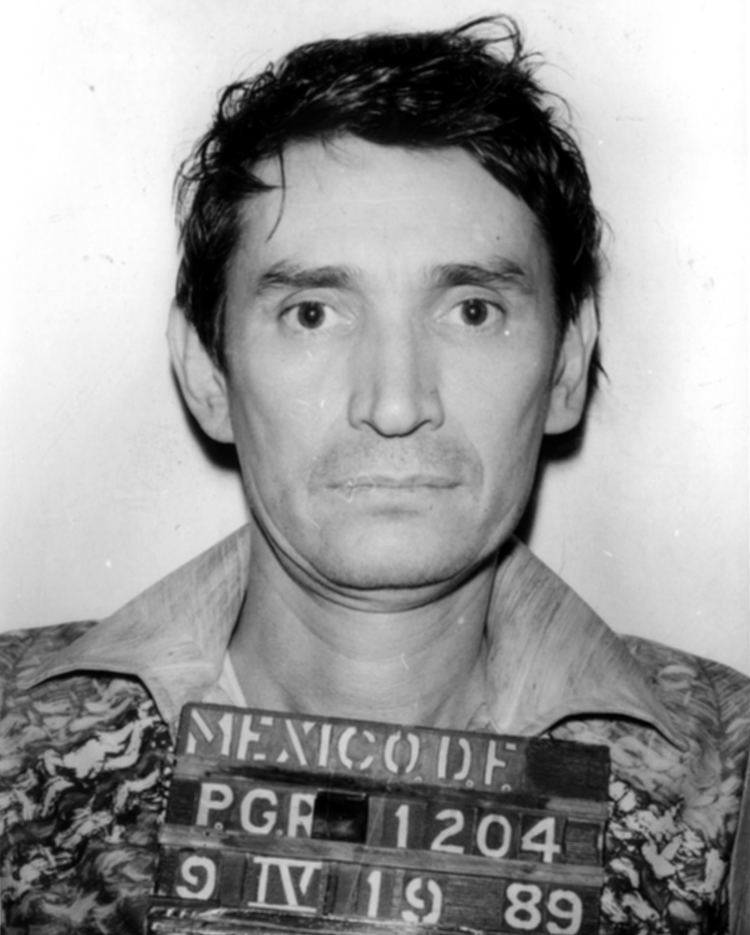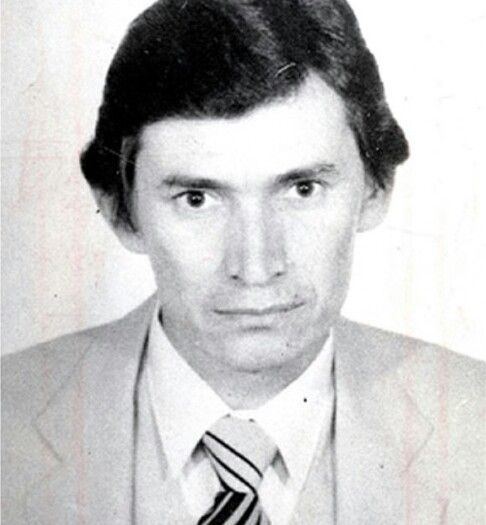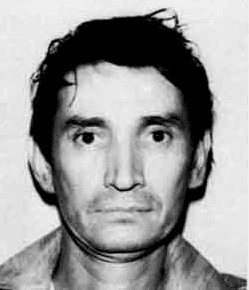Nationality Mexican | Name Miguel Felix | |
 | ||
Other names El Padrino (The Godfather) Criminal status Incarcerated at Almoloya de Juarez prison Conviction(s) Drug trafficking, murder Partner(s) Similar Rafael Caro Quintero , Ernesto Fonseca Carrillo , Amado Carrillo Fuentes | ||
Miguel Ángel Félix Gallardo (born on January 8, 1946), commonly referred to by his alias El Padrino ("The Godfather"), is a convicted Mexican Drug lord who formed the Guadalajara Cartel in the 1980s, and controlled almost all of the drug trafficking in Mexico and the corridors along the Mexico–United States border.
Contents
- Early life and career
- Connections to Colombian cartels
- Murder of DEA Agent Enrique Camarena
- Division of territory
- Arrest
- Incarceration
- Memoirs
- Family
- References

Ultimately, Gallardo was arrested for the murder of Drug Enforcement Administration (DEA) agent Enrique Camarena, who was tortured to death on one of Gallardo's ranches. He is now serving a 40-year sentence in the maximum security prison known as Altiplano.

Early life and career
Born on a ranch in Bellavista on the outskirts of Culiacán, Sinaloa, Félix Gallardo first graduated high school and studied business in college. However he then took a job as a Mexican Federal Judicial Police agent. He worked as a family bodyguard for the governor of Sinaloa state Leopoldo Sanchez Celis, whose political connections Gallardo used to help build his drug trafficking organization. Gallardo was also the godfather of Celis' son Rodolfo.
Connections to Colombian cartels

In the early 1980s, drug interdiction efforts increased around Florida, which was then the major shipping destination for illegal drug traffickers. As a result, the Colombian cartels began to utilize Mexico as their primary transhipment point. Juan Matta-Ballesteros was Gallardo's primary connection to the Colombian cartels. Matta-Ballesteros had originally introduced Gallardo's predecessor, Alberto Sicilia-Falcon to Santiago Ocampo of the Cali Cartel, the head of one of the largest U.S. cocaine smuggling rings. Rather than taking cash payments for their services, the smugglers in the Guadalajara cartel took a 50% cut of the cocaine they transported from Colombia. This was extremely profitable for them, with some estimating that the trafficking network operated by Felix Gallardo, Ernesto Fonseca Carrillo, and Caro Quintero was pulling in $5 billion annually.

Until the end of the 1980s, the Sinaloa coalition headed by Felix Gallardo (composed of what is today the Sinaloa, Tijuana, Juarez, and Pacifica Sur cartels) had an almost complete monopoly on illegal drug traffic in Mexico.
Murder of DEA Agent Enrique Camarena

An undercover agent from the U.S. Drug Enforcement Administration (DEA), Enrique Camarena managed to infiltrate deep into the drug trafficking organization and had become close to Félix Gallardo. In 1984, acting on information from Camarena, 450 Mexican soldiers backed by helicopters destroyed a 1,000 hectare (≈2,500 acre) marijuana plantation known as 'Rancho Búfalo' in Chihuahua, Mexico, as part of "Operation Godfather". Thousands of farmers worked the fields at Rancho Buffalo, and the annual production was later valued at US$8 billion. All of this took place with the knowledge of local police, politicians, and the military. Camarena was also beginning to expose the connections between drug traffickers, Mexican law enforcement, and high-ranking government officials within the PRI, which Gallardo considered to be a major threat to the Guadalajara cartel's operations throughout Mexico.
Félix Gallardo ordered the kidnapping of Enrique Camarena. On February 7, 1985 Jalisco police officers on the cartel's payroll kidnapped Camarena as he left the U.S. consulate. His helicopter pilot, Alfredo Zavala Avelar, was also kidnapped soon afterwards. They were both brought to a ranch owned by Gallardo and brutally tortured over the course of 30 hours. On February 9, Camarena was killed when a Phillips-head screwdriver was stabbed into his skull. His shrink-wrapped body was later found, along with Avelar's, in a shallow hole on a ranch in Michoacan state.
Camarena's murder prompted one of the largest DEA homicide investigations ever undertaken, Operation Leyenda. A special unit was dispatched to coordinate the investigation in Mexico, where corrupt officials were being implicated. Investigators soon identified Miguel Ángel Félix Gallardo and his two close associates: Ernesto Fonseca Carrillo and Rafael Caro Quintero as the primary suspects in the kidnapping. Under enormous pressure from the US, Fonseca and Quintero were quickly apprehended, but Félix Gallardo still enjoyed political protection.
Division of territory
Félix Gallardo kept a low profile and in 1987 moved with his family to Guadalajara city. He then decided to divide up the trade he controlled as it would be more efficient and less likely to be brought down in one law enforcement swoop. Félix Gallardo convened the nation's top drug narcos at a house in the resort of Acapulco where he designated the plazas or territories. The Tijuana route would go to the Arellano Felix brothers. The Ciudad Juárez route would go to the Carrillo Fuentes family. Miguel Caro Quintero would run the Sonora corridor. The control of the Matamoros, Tamaulipas corridor - then becoming the Gulf Cartel- would be left undisturbed to Juan García Abrego. Meanwhile, Joaquín Guzmán Loera and Ismael Zambada García would take over Pacific coast operations, becoming the Sinaloa Cartel. Guzmán and Zambada brought veteran Héctor Luis Palma Salazar back into the fold. Félix Gallardo still planned to oversee national operations; he had the contacts so he was still the top man, but he would no longer control all details of the business.
Arrest
Félix Gallardo was arrested in Mexico on April 8, 1989. He was charged by the authorities in Mexico and the United States with the kidnapping and murder of United States DEA Agent Enrique Camarena, racketeering, drug smuggling and multiple violent crimes.
According to American officials, Felix Gallardo also spent time as the Sinaloa governor's house guest, which governor Antonio Toledo Corro has denied. When asked about his association with Felix Gallardo, governor Toledo said he was "unaware of any outstanding arrest warrants" against Félix Gallardo. The arrest of Félix Gallardo was the catalyst to exposing the widespread corruption at political and law enforcement levels in Mexico. Within days of his arrest, and under pressure from the media, several police commanders were arrested and as many as 90 officers deserted. No politicians were charged.
Incarceration
While incarcerated, he remained one of Mexico's major traffickers, maintaining his organization via mobile phone until he was transferred in the 1990s to the 'Altiplano', a maximum security prison, where he is serving a 40-year sentence.
As he grew older, Félix Gallardo complained that he lived in poor conditions while in jail. He says that he suffers from vertigo, deafness, loss of an eye, and blood circulation problems. He lives in a 2.40 x 4.40 meter cell, which he is not allowed to leave, even to the recreational area. In March 2013 Félix Gallardo started a legal process to continue his prison sentence at home when he reaches his 70th birthday on 8 January 2016. On 29 April 2014 a Mexican federal court denied Félix Gallardo's petition to be transferred from the maximum-security prison to a medium-security one. On 18 December 2014, federal authorities approved his request to transfer him to a medium-security prison in Guadalajara (State of Jalisco) due to his declining health conditions.
Memoirs
In 2008, the investigative journalist Diego Enrique Osorno was able contact Félix Gallardo through his 13 year old son. Through this connection, the first memoirs of a Mexican druglord were brought forth from out of the prison, written in secret, hurriedly, by hand, and through ailing vision. The memoirs give narrative to his arrest and presentation before police, explains a bit of his family tree, jumping from one topic to another. Selections of the 35 pages were published in the Mexican magazine Gatopardo, with background by the journalist.
Family
Sandra Ávila Beltrán, a former member of the Sinaloa Cartel, is his niece.
